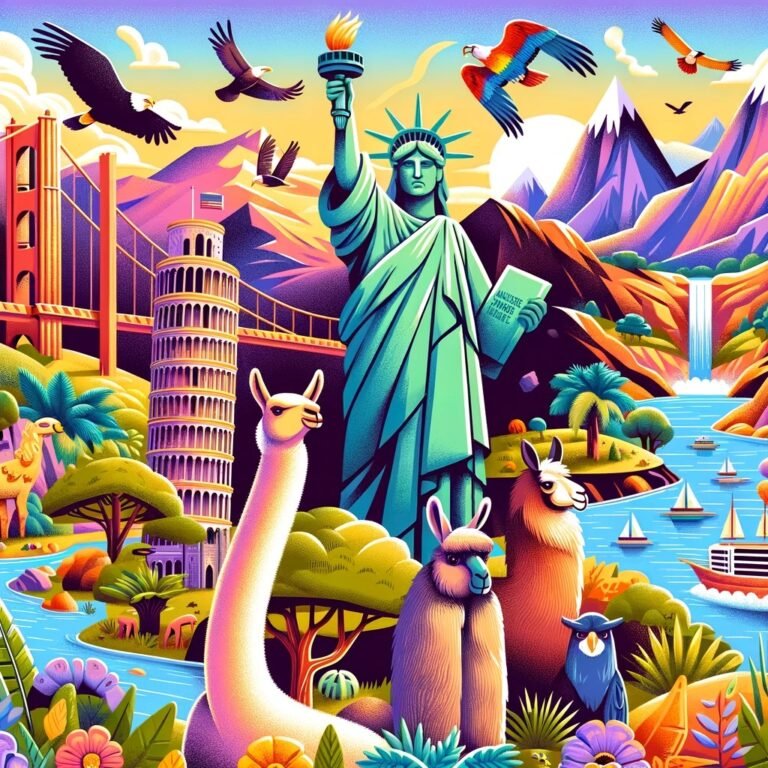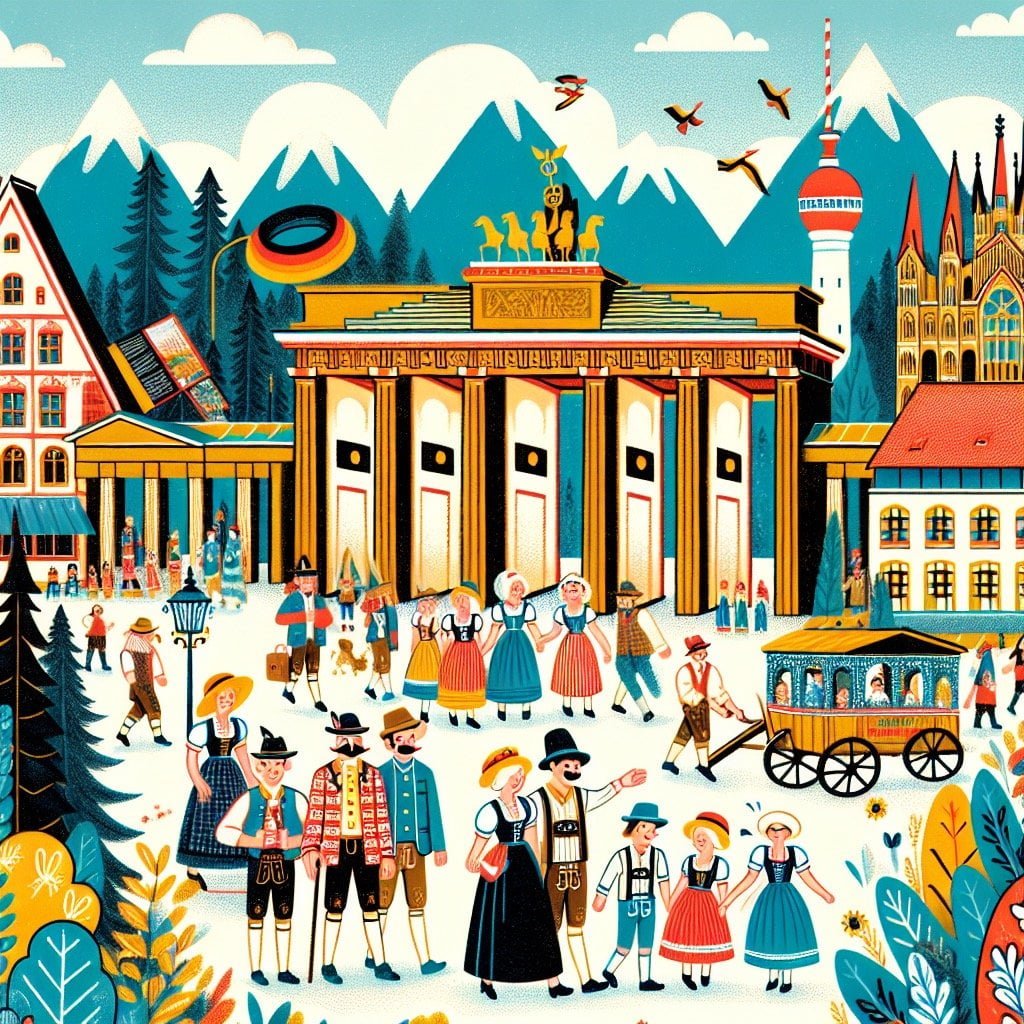Welcome to a world of wonder and discovery with Fun Facts for Kids About Americas! As an expert in popular science, you understand the importance of engaging young minds and sparking curiosity about the fascinating world around us. The Americas, with its diverse landscapes and rich cultures, offer endless opportunities for exploration and learning. From the majestic Amazon Rainforest producing 20% of the world’s oxygen to the innovative Quipu system used by the ancient Incas, each fact is a gateway to a deeper understanding of our planet’s history and biodiversity. Join us on this exciting journey through the Americas, where each fun fact is a stepping stone to inspiring a new generation of global citizens and environmental stewards. Let’s dive into the wonders of the Americas together!
Fun Facts for Kids About Americas
1. The Amazon Rainforest Produces 20% of the World’s Oxygen
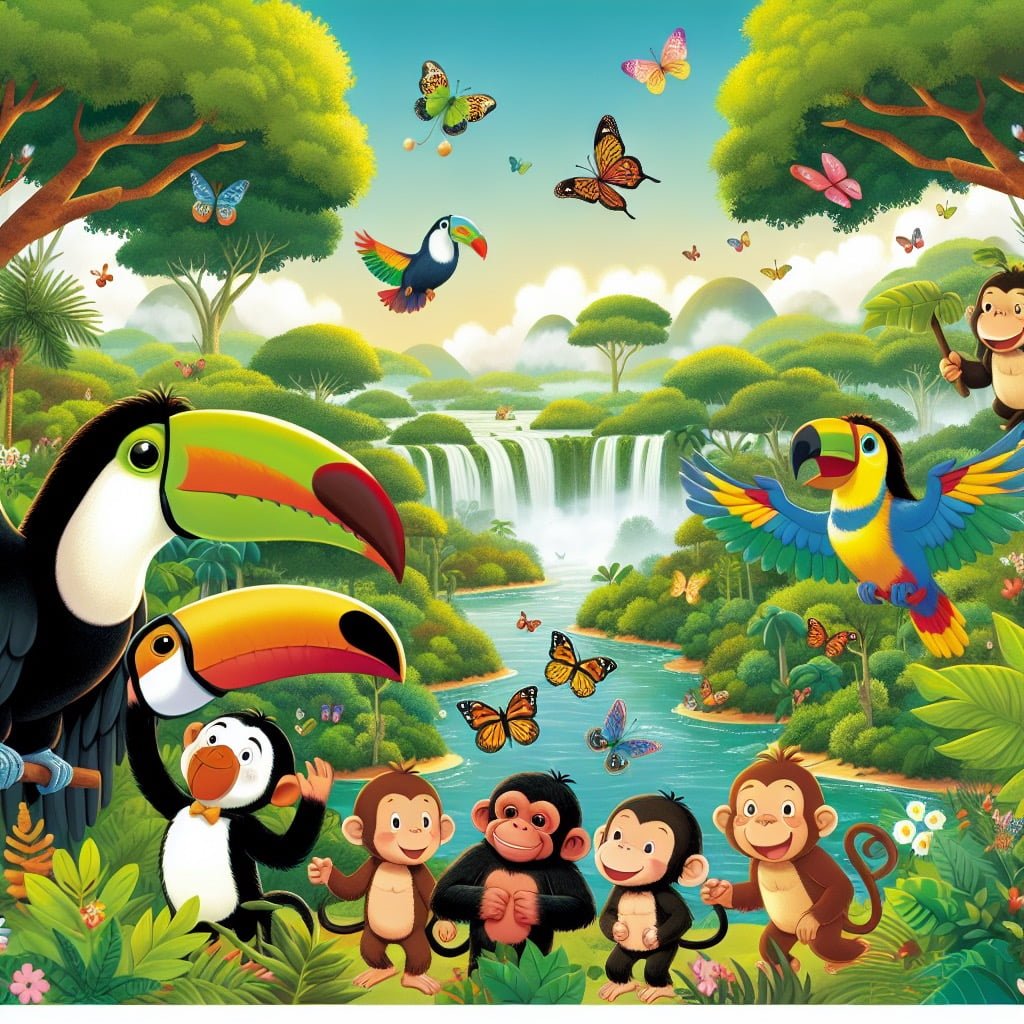
For younger kids: The Amazon Rainforest helps us breathe!
For older kids: The Amazon Rainforest is often referred to as the ‘lungs of the Earth’ because it produces 20% of the world’s oxygen, crucial for supporting life on our planet.
Detailed explanation:The Amazon Rainforest is often referred to as the “lungs of the Earth” because of its crucial role in producing oxygen. It is estimated that this vast expanse of tropical rainforest in South America generates around 20% of the world’s oxygen supply. This staggering statistic highlights the immense importance of the Amazon Rainforest in regulating the planet’s atmosphere and supporting life on Earth.
So, how exactly does the Amazon Rainforest produce oxygen? The process mainly involves photosynthesis, which is carried out by the countless trees, plants, and other vegetation that make up this diverse ecosystem. During photosynthesis, plants take in carbon dioxide from the air and water from the soil, using sunlight to convert these ingredients into oxygen and glucose (a form of sugar that plants use for energy). This oxygen is then released back into the atmosphere, where it becomes available for humans and other organisms to breathe.
In addition to producing oxygen, the Amazon Rainforest also plays a crucial role in storing carbon dioxide, a greenhouse gas that contributes to climate change. By absorbing large amounts of carbon dioxide through photosynthesis, the rainforest helps to mitigate the impacts of human activities that release this gas into the atmosphere, such as deforestation and the burning of fossil fuels.
In conclusion, the Amazon Rainforest is not only a biodiversity hotspot but also a vital source of oxygen for the planet. Understanding and raising awareness about the importance of preserving this ecosystem is crucial for the future of our planet and all its inhabitants. Next time you take a breath of fresh air, remember to thank the Amazon Rainforest for its essential role in keeping our atmosphere oxygen-rich. Fun Facts for Kids About Americas.
Fun Facts for Kids About Americas
2. The Andes Mountains is the Longest Mountain Range
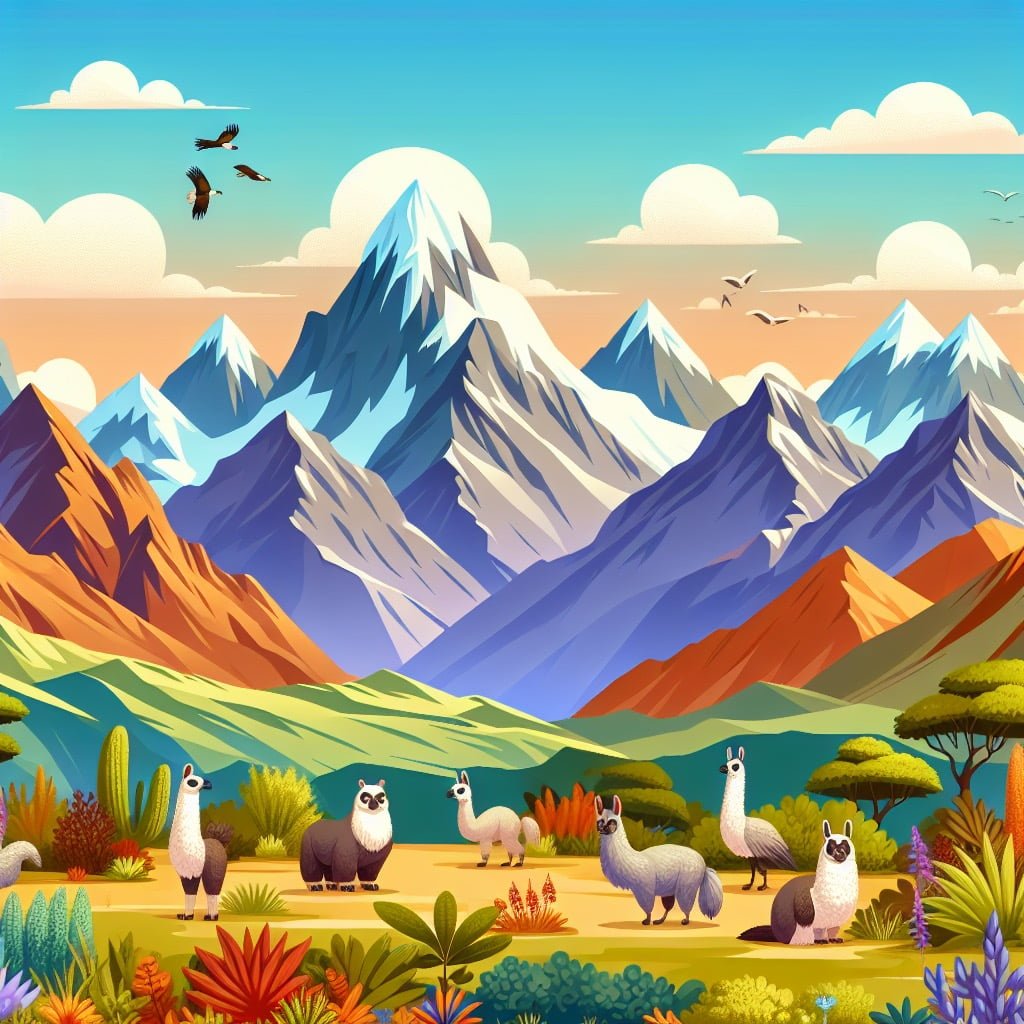
For younger kids: The Andes Mountains are super long and tall!
For older kids: The Andes Mountains in South America span over 4,300 miles, making it the longest mountain range in the world.
Detailed explanation:The Andes Mountains is the longest mountain range in the world, stretching approximately 7,000 kilometers along the western coast of South America. This impressive mountain range passes through seven countries, including Venezuela, Colombia, Ecuador, Peru, Bolivia, Chile, and Argentina. The Andes are known for their stunning beauty, diverse ecosystems, and rich cultural history.
One of the most fascinating Fun Facts for Kids About Americas is that the Andes Mountains were formed through the process of plate tectonics. Millions of years ago, the Nazca Plate collided with the South American Plate, causing the land to buckle and fold, creating the towering peaks and deep valleys that we see today. This geological process continues to this day, with the Andes still growing taller as the plates continue to collide.
The Andes Mountains are home to a wide variety of plant and animal species, many of which are found nowhere else on Earth. The diverse ecosystems found in the Andes range from the lush rainforests of the Amazon basin to the barren deserts of northern Chile. The mountains also boast a rich cultural history, with numerous indigenous communities living in the region for thousands of years.
In addition to their natural and cultural significance, the Andes Mountains also play a crucial role in the local climate. The towering peaks of the Andes act as a barrier, forcing moist air from the Pacific Ocean to rise and cool, leading to the formation of rain clouds and providing much-needed water to the surrounding areas. This phenomenon, known as orographic lift, is essential for the region’s agriculture and water supply.
Overall, the Andes Mountains are not only the longest mountain range in the world but also a fascinating and important natural wonder that continues to captivate and inspire people of all ages.
Fun Facts for Kids About Americas
3. The Aztec Civilization Developed the First Chocolate Drink
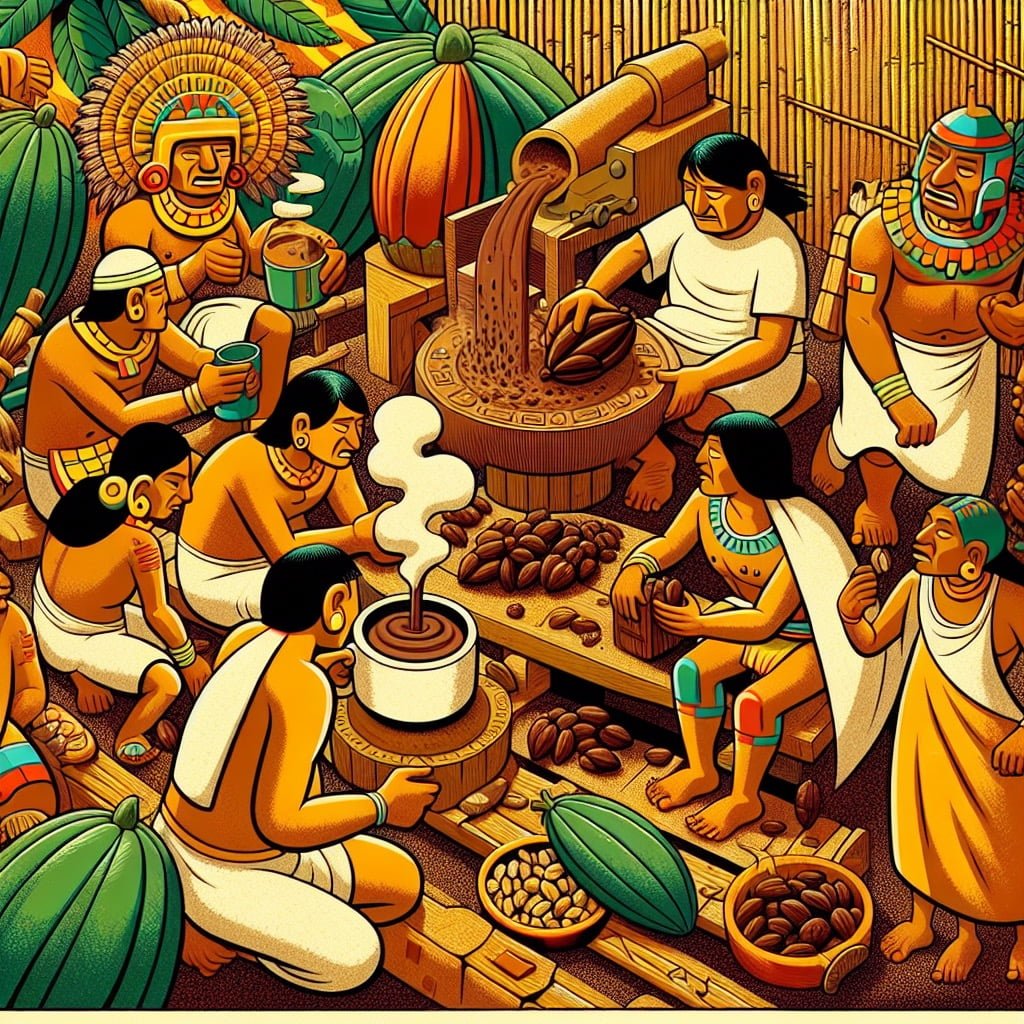
For younger kids: The Aztecs made the first chocolate drink!
For older kids: The ancient Aztecs were the first to create a frothy, spicy chocolate drink called ‘xocolātl’, which later became the basis for modern hot chocolate.
Detailed explanation:The Aztec civilization, known for their advanced agricultural practices, intricate calendar system, and impressive architectural feats, is also credited with developing the first chocolate drink. Cacao beans, which were highly prized and used as a form of currency in Aztec society, were the key ingredient in this decadent beverage.
The Aztecs believed that cacao beans were a gift from the gods, particularly the god Quetzalcoatl who was said to have brought cacao to earth from paradise. Cacao beans were ground into a paste and mixed with water, chili peppers, and other spices to create a frothy and spicy drink known as xocolatl, which means “bitter water” in Nahuatl, the Aztec language.
This chocolate drink was enjoyed by the Aztec elite during religious ceremonies, celebrations, and even as a form of medicine. It was believed to have aphrodisiac properties and provide a boost of energy. The drink was also used as a form of payment to soldiers and as a tribute to rulers.
The Spanish conquistadors, led by Hernan Cortes, encountered the chocolate drink during their conquest of the Aztec Empire in the early 16th century. They brought cacao beans back to Europe, where the drink was eventually sweetened with sugar and became popular among the elite classes. This marked the beginning of the global spread of chocolate as a beloved treat enjoyed by people all over the world.
In conclusion, the Aztec civilization’s development of the first chocolate drink is a fascinating aspect of their rich culture and history. It showcases their ingenuity, culinary skills, and reverence for cacao beans as a precious and sacred gift from the gods. Fun facts for kids about the Americas include learning about the Aztecs and their delicious contribution to the world of chocolate.
Fun Facts for Kids About Americas
4. The Niagara Falls is One of the Seven Natural Wonders of the World
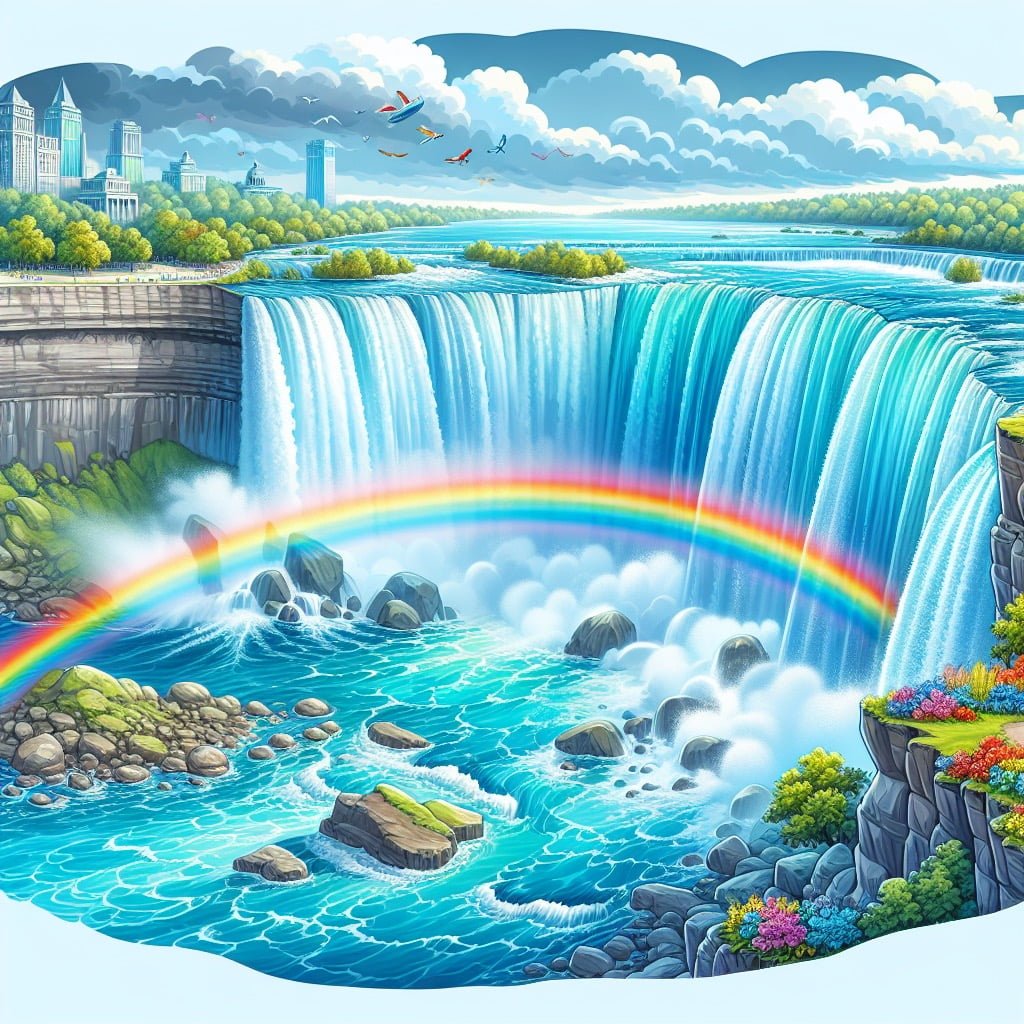
For younger kids: The Niagara Falls is super famous and beautiful!
For older kids: Niagara Falls, located on the border of the United States and Canada, is known for its breathtaking beauty and is recognized as one of the Seven Natural Wonders of the World.
Detailed explanation:The Niagara Falls is truly a remarkable natural wonder that captivates visitors from around the world with its sheer size and power. Located on the border between the United States and Canada, this iconic waterfall is made up of three separate waterfalls: the Horseshoe Falls, the American Falls, and the Bridal Veil Falls. Together, these falls form the collective beauty that is known as the Niagara Falls.
One of the most interesting Fun Facts for Kids About Americas is that the Niagara Falls is not just a breathtaking sight to behold, but also a valuable source of hydroelectric power. The rushing waters of the falls generate a significant amount of energy, which is harnessed by power plants in the surrounding area. This sustainable energy source helps to provide electricity to millions of homes and businesses in the region.
Another fascinating aspect of the Niagara Falls is its constant erosion and evolution. The powerful force of the water has been shaping the rock formations behind the falls for thousands of years, creating caves and tunnels that add to the natural beauty of the area. Over time, the falls have migrated upstream due to this erosion, and it is estimated that they will continue to move back at a rate of about one foot per year.
In addition to its natural beauty and power, the Niagara Falls also holds cultural significance for the Native American tribes that once inhabited the region. For centuries, these tribes have viewed the falls as a sacred site and a source of spiritual inspiration. Today, visitors can learn about the rich history and folklore surrounding the falls at the nearby museums and cultural centers.
In conclusion, the Niagara Falls truly deserves its status as One of the Seven Natural Wonders of the World. Its beauty, power, and cultural significance make it a must-see destination for anyone interested in the natural wonders of the Americas.
Fun Facts for Kids About Americas
5. The Caribbean Sea Has the Clearest Water in the World
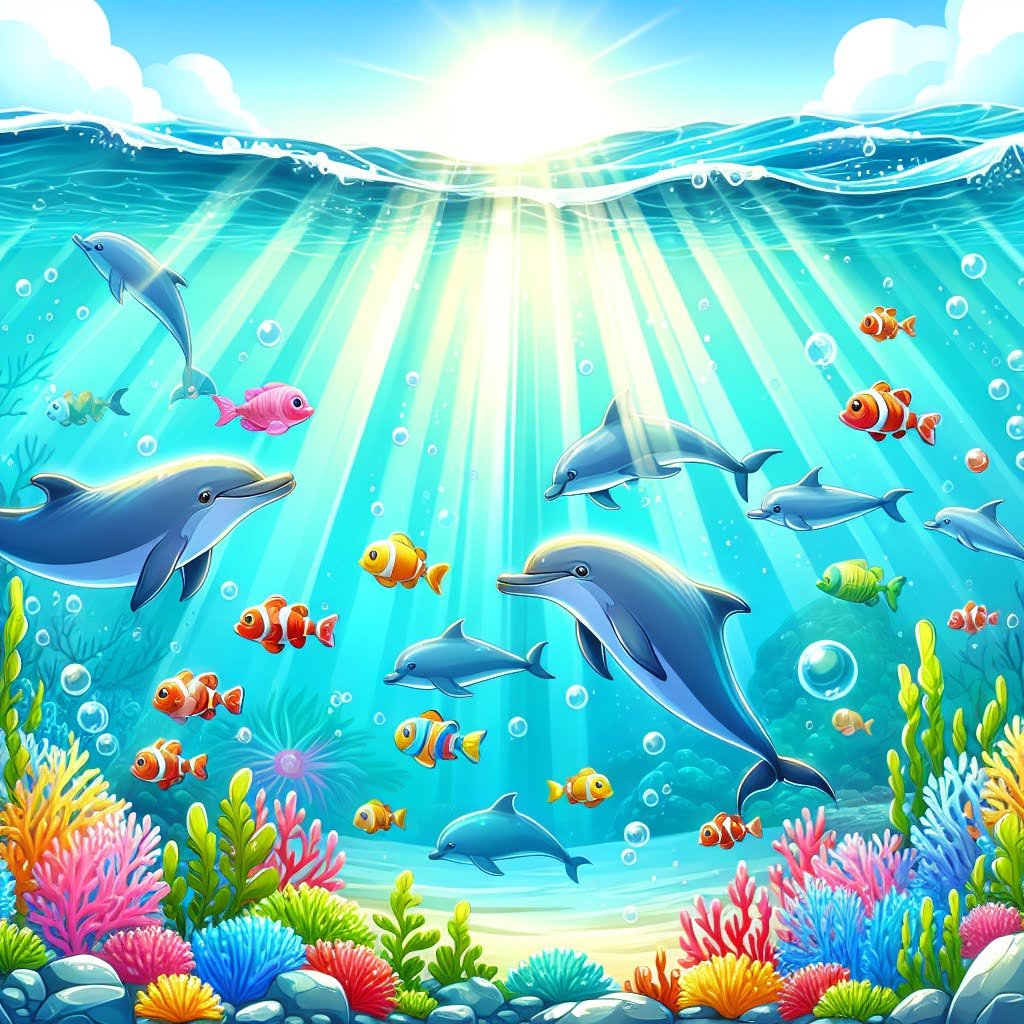
For younger kids: The Caribbean Sea has really clear water!
For older kids: The waters of the Caribbean Sea are known for their stunning clarity, allowing visibility of up to 200 feet in some areas.
Detailed explanation:The Caribbean Sea is renowned for its crystal-clear waters, making it one of the most popular destinations for tourists and travelers alike. The clarity of the water in this region can be attributed to a combination of factors, including the absence of pollution, low levels of sedimentation, and optimal conditions for coral reefs to thrive.
One of the main reasons the Caribbean Sea has some of the clearest water in the world is due to its low levels of pollution. Unlike other parts of the world where industrial run-off and waste can cloud the waters, the Caribbean Sea benefits from strict environmental regulations and conservation efforts that help maintain its pristine condition. Additionally, the lack of major urban centers or industrial activities directly along the coastline also contributes to the overall cleanliness of the water.
Furthermore, the Caribbean Sea has relatively low levels of sedimentation compared to other bodies of water. Sedimentation can cause water to appear murky or cloudy, but the Caribbean Sea’s clear blue waters are largely free from this issue. The absence of rivers carrying large amounts of sediment into the sea, combined with the presence of healthy coral reefs that act as natural filters, helps to keep the water in the Caribbean Sea exceptionally clear.
In conclusion, the Caribbean Sea stands out as having some of the clearest water in the world due to its low pollution levels, minimal sedimentation, and thriving coral reefs. For kids and adults alike, learning about the unique qualities of the Caribbean Sea can be both educational and inspiring when planning future trips to this beautiful region. Fun facts for kids about the Americas can include the amazing water clarity of the Caribbean Sea as a fascinating natural phenomenon to explore and appreciate.
Fun Facts for Kids About Americas
6. The Panama Canal Connects the Pacific and Atlantic Oceans
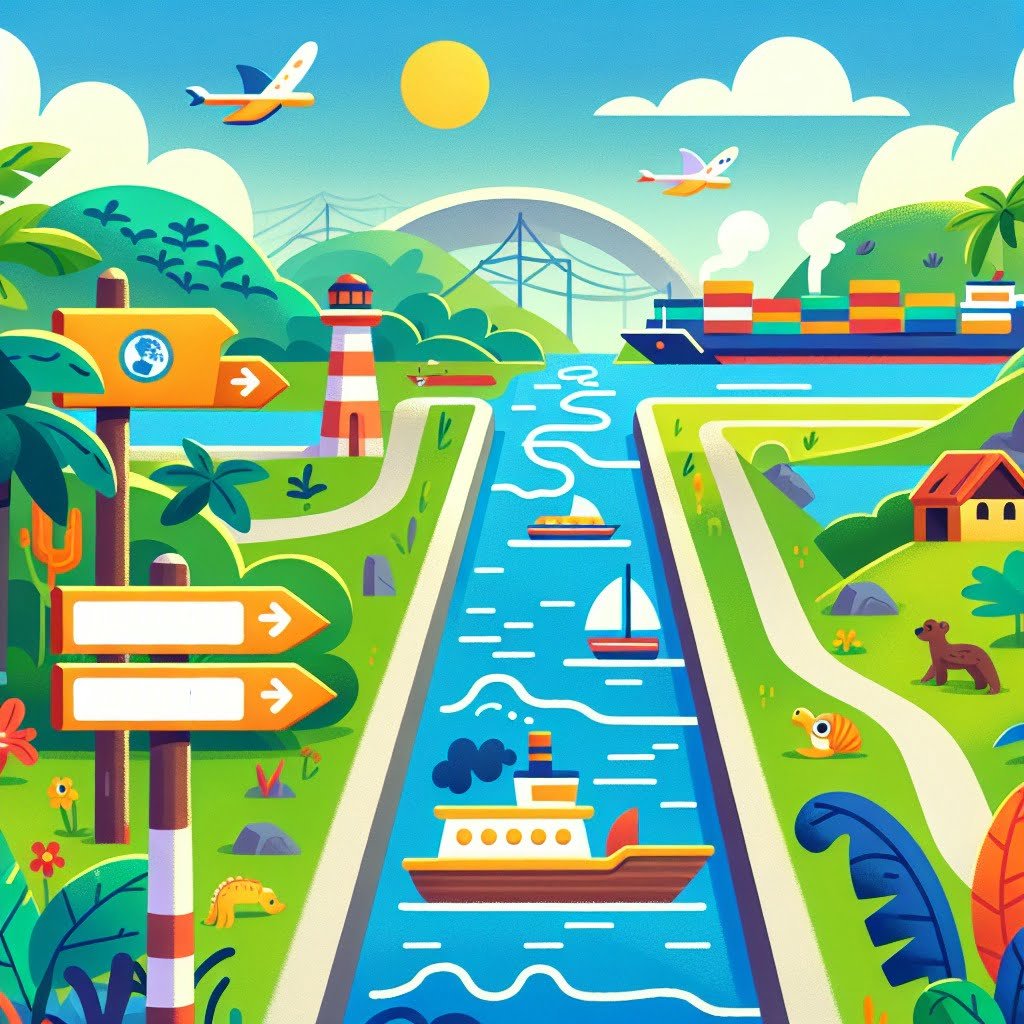
For younger kids: The Panama Canal is like a special bridge for boats!
For older kids: The Panama Canal is an engineering marvel that connects the Pacific and Atlantic Oceans, allowing ships to avoid the long and dangerous trip around the southern tip of South America.
Detailed explanation:One of the most fascinating Fun Facts for Kids About Americas is that the Panama Canal acts as a vital link between the Pacific and Atlantic Oceans. This man-made waterway, located in Panama, connects the two major oceans and plays a crucial role in international trade and shipping.
The construction of the Panama Canal was a monumental engineering feat that began in the late 19th century and was completed in 1914. Before its existence, ships had to navigate around the southern tip of South America, known as Cape Horn, to travel between the two oceans. This added thousands of miles to their journey and was both time-consuming and dangerous due to the treacherous waters of the Southern Ocean.
The creation of the Panama Canal revolutionized global shipping by providing a shortcut between the Pacific and Atlantic Oceans. Ships are now able to pass through the canal, saving time and fuel costs. The canal also allows for larger ships to travel between the oceans, increasing efficiency and reducing the environmental impact of shipping.
The Panama Canal consists of a series of locks that raise and lower ships to the level of the oceans on either side. This intricate system of locks and channels allows ships to navigate through the narrow strip of land in Panama, connecting two of the world’s largest bodies of water.
In conclusion, the Panama Canal is an impressive engineering marvel that has had a significant impact on global trade and transportation. It continues to play a crucial role in connecting the Pacific and Atlantic Oceans, making it one of the most interesting Fun Facts for Kids About Americas.
Fun Facts for Kids About Americas
7. The Statue of Liberty Was a Gift from France

For younger kids: The Statue of Liberty was a present from another country!
For older kids: The iconic Statue of Liberty in New York City was a gift from France, symbolizing friendship and freedom between the two nations.
Detailed explanation:One of the most iconic symbols of the United States, the Statue of Liberty, was actually a gift from France. This monumental statue, standing at 305 feet tall, was designed by French sculptor Frédéric Auguste Bartholdi and was dedicated on October 28, 1886. It was given to the United States as a symbol of friendship and alliance between the two nations.
The idea for the Statue of Liberty originated in the mid-19th century when French historian Edouard de Laboulaye proposed the idea of a monument to commemorate the centennial of the American Declaration of Independence. Bartholdi was commissioned to design the statue, which was meant to represent freedom and democracy. The statue’s iconic features, such as the torch and the crown with seven spikes representing the seven continents and seas, were carefully chosen to symbolize these ideals.
The construction of the statue was a monumental task that involved both France and the United States. The statue was constructed in France and then disassembled and shipped to the United States in 1885. Once it arrived in New York, it was reassembled on a pedestal on Liberty Island in New York Harbor.
Today, the Statue of Liberty remains a symbol of freedom, democracy, and hope for millions of people. It is a popular tourist attraction and a must-see for visitors to New York City. The statue’s significance as a gift from France to the United States serves as a reminder of the strong bond between the two nations.
In conclusion, the Statue of Liberty being a gift from France is a wonderful example of international friendship and cooperation. It is a symbol that continues to inspire and captivate people from all over the world, especially children who learn fun facts about Americas.
Fun Facts for Kids About Americas
8. The Aztecs Built Floating Gardens Called “Chinampas”
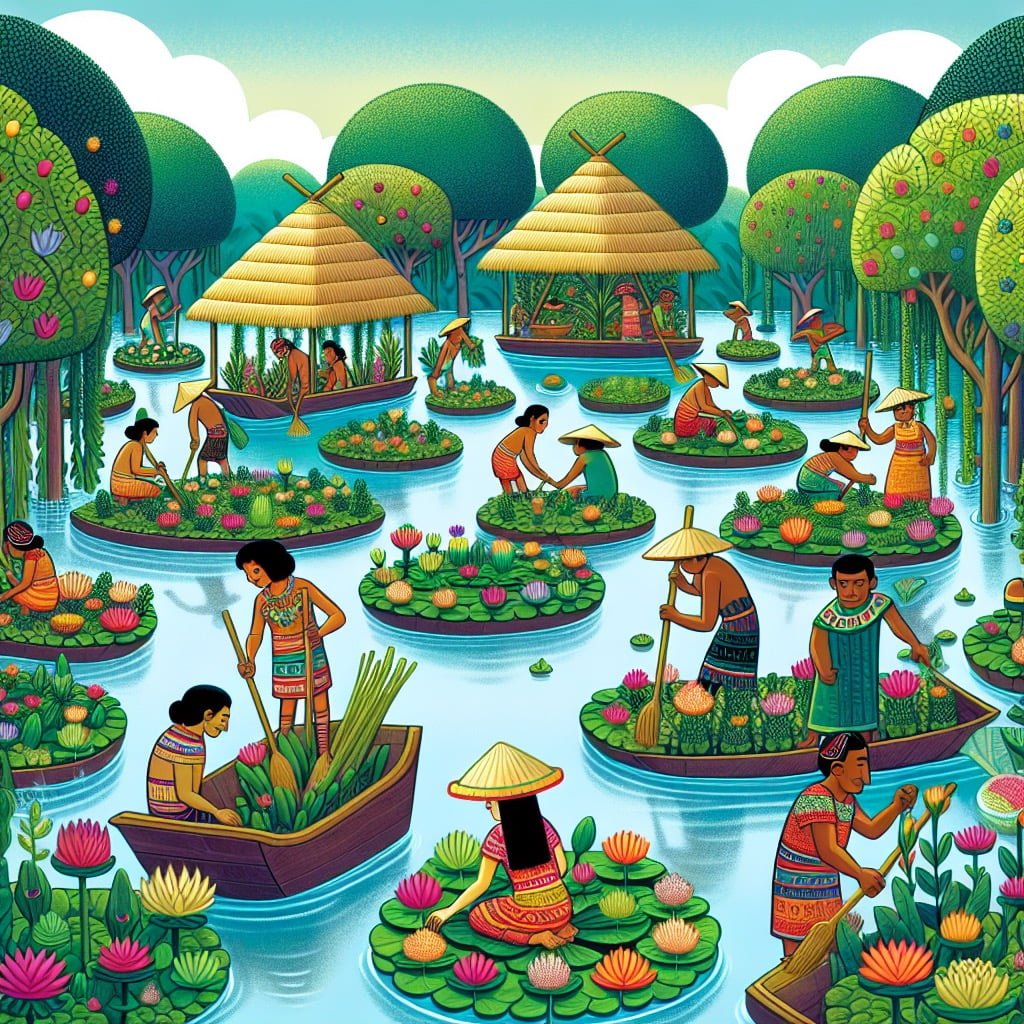
For younger kids: The Aztecs made gardens that float on water!
For older kids: The Aztecs created ‘chinampas’, artificial islands made from mud and plant matter, to grow crops on the shallow waters of Lake Xochimilco, near modern-day Mexico City.
Detailed explanation:The Aztecs, a fascinating ancient civilization that thrived in central Mexico from the 14th to the 16th century, were known for their innovative agricultural practices. One of the most unique and impressive achievements of the Aztecs was the construction of floating gardens called “Chinampas.”
These Chinampas were man-made islands built on the shallow waters of Lake Xochimilco and Lake Texcoco. The Aztecs utilized a system of woven reeds, mud, and soil to create fertile platforms that floated on the surface of the water. They then planted various crops such as maize, beans, squash, and tomatoes on these floating gardens.
The ingenious design of the Chinampas allowed the Aztecs to maximize their agricultural output in a region with limited arable land. This method of farming not only provided sustenance for the growing population of the Aztec capital city of Tenochtitlan, but also played a crucial role in the economy of the civilization.
In addition to being a practical solution to the challenges of farming in a marshy environment, the Chinampas also had cultural significance for the Aztecs. They were considered a symbol of the connection between the natural world and human ingenuity, reflecting the Aztec people’s deep reverence for nature.
Overall, the construction of the Chinampas showcases the advanced agricultural knowledge and engineering skills of the Aztec civilization. It is just one of the many fascinating aspects of Aztec culture that offer valuable insights into the history of the Americas. Fun Facts for Kids About Americas can include amazing stories like this one, highlighting the ingenuity and resourcefulness of ancient civilizations.
Fun Facts for Kids About Americas
9. The Angel Falls in Venezuela is the Tallest Waterfall in the World
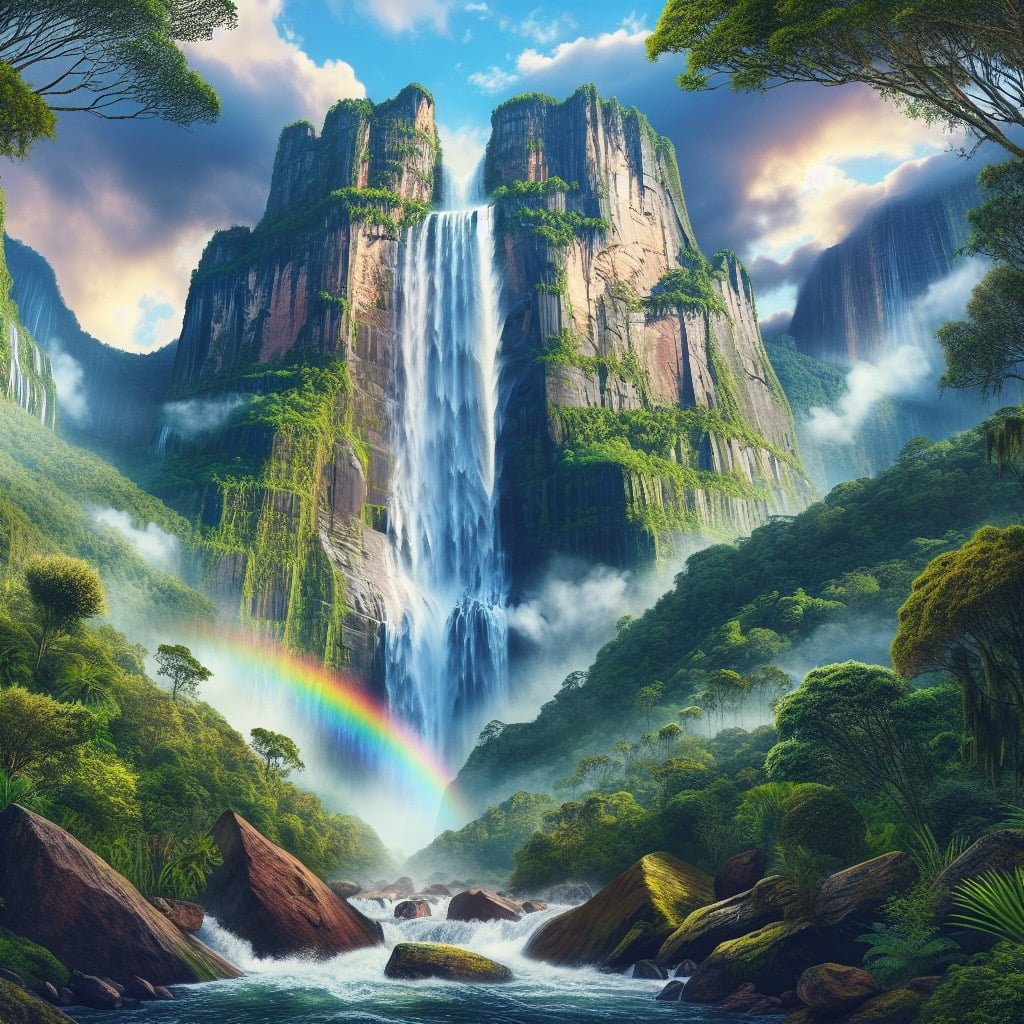
For younger kids: The Angel Falls is the highest waterfall ever!
For older kids: Angel Falls, located in Venezuela, holds the title of the world’s highest uninterrupted waterfall, tumbling from a height of 3,212 feet.
Detailed explanation:Angel Falls in Venezuela is known as the highest waterfall in the world, making it a fascinating topic to explore when discussing Fun Facts for Kids About Americas. With a total height of 3,212 feet and a continuous drop of 2,648 feet, this natural wonder is a sight to behold for any visitor.
The origin of the name “Angel Falls” comes from American aviator Jimmie Angel, who was the first person to fly over the falls back in 1933. The falls are located in the Canaima National Park in the Gran Sabana region of Venezuela, surrounded by lush tropical rainforests and stunning landscapes. Its height and remote location make it a popular destination for adventurers and nature lovers alike.
The water from Angel Falls comes from the Churun River, which flows over the edge of the Auyantepui Mountain, one of the many table-top mountains in the region. The water cascades down in a single uninterrupted flow, creating a breathtaking sight that attracts tourists from all over the world.
In addition to its impressive height, Angel Falls is also famous for creating a phenomenon known as “waterfall mist,” where the water droplets create a fine mist that surrounds the falls, adding to its mystique and beauty. The area around Angel Falls is also home to a diverse range of plants and animals, making it a hotspot for biodiversity and ecological studies.
Overall, Angel Falls in Venezuela is a prime example of the natural wonders that can be found throughout the Americas, making it a must-see destination for anyone interested in exploring the beauty and splendor of the region.
Fun Facts for Kids About Americas
10. The Incas Used Quipu, a System of Knots, for Recordkeeping
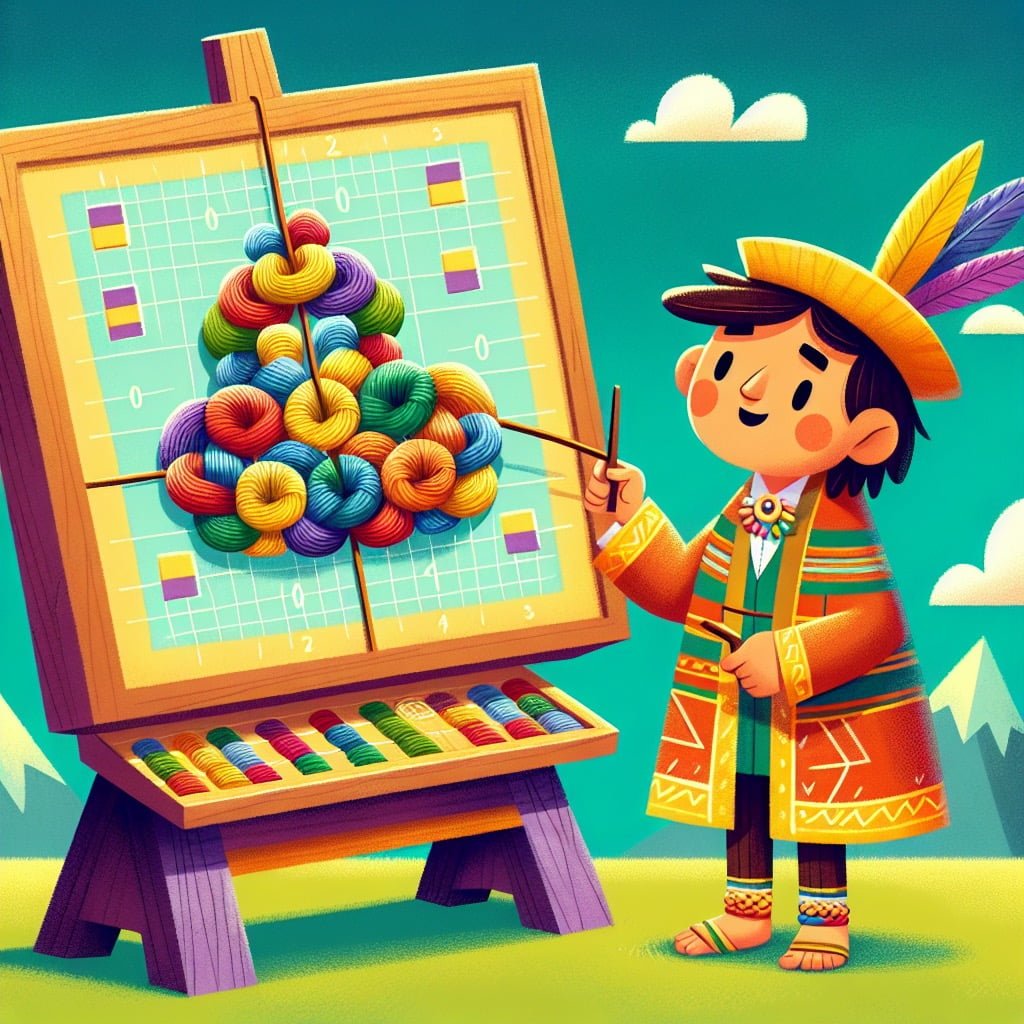
For younger kids: The Incas made special knots to remember things!
For older kids: The Inca civilization of South America used ‘quipu’, a complex system of knots on strings, to record information such as census data, financial records, and historical accounts.
Detailed explanation:The Inca civilization, which thrived in South America during the 15th and 16th centuries, utilized a unique and innovative system for recordkeeping known as quipu. This system involved the use of colored strings or ropes, with knots tied at various intervals along the length of the cords. These quipu were used for a variety of purposes, including keeping track of population numbers, recording trade transactions, and even for storytelling.
One of the most fascinating aspects of the quipu system is that it was a non-written form of communication. Instead of writing down information on paper or parchment, the Incas used knots and strings to represent numerical data and other important information. Each knot on the quipu had a specific meaning, such as representing a certain number or type of goods.
The quipu system was highly sophisticated and allowed the Inca civilization to keep accurate records without the need for a written language. This is particularly impressive considering that the Inca Empire stretched over a vast territory, spanning parts of modern-day Peru, Ecuador, Bolivia, and Chile.
In addition to recordkeeping, quipu were also used for storytelling and transmitting cultural traditions from one generation to the next. By incorporating different colors and types of strings, the Incas were able to create complex narratives that were passed down through oral tradition.
Overall, the use of quipu by the Incas is a fascinating example of how ancient civilizations developed advanced systems of communication and recordkeeping. Fun facts for kids about the Americas, such as the use of quipu by the Incas, can help to spark curiosity and interest in the history and culture of this region.
Did You Know?
The Americas are home to a rich tapestry of traditions, languages, and art, making it a vibrant and diverse continent!
.
The Americas is a continent full of wonders waiting to be explored, from the majestic Amazon Rainforest to the ancient ruins of Machu Picchu. By diving into fun facts about the Americas, not only do kids get to learn about the rich history, diverse geography, and fascinating wildlife of the region, but they also gain a deeper appreciation for the natural world. Did you know that the Amazon Rainforest produces 20% of the world’s oxygen? How about the fact that Machu Picchu was built over 500 years ago by the Inca civilization? These are just a few examples of the incredible discoveries that await.
Learning about the Americas can inspire a sense of wonder and curiosity about the interconnectedness of all living things and the importance of environmental conservation. By expanding their knowledge of the world around them, kids are better equipped to become responsible global citizens and protect our planet for future generations. So, don’t miss out on the opportunity to take a journey through the Americas with your child and unlock a world of wonders just waiting to be explored!
Sources and additional information for Fun Facts for Kids About Americas
WikipediaBritannicaCIA World FactbookCentral Intelligence Agency (CIA)The World BankUnited Nations Children’s Fund (UNICEF)BBC NewsLonely PlanetCouncil on Foreign RelationsThe World Factbook (CIA)United NationsBBC Country ProfilesLonely PlanetThe World Bank CountriesUNESCO World Heritage CentreCountryReportsGlobalEdge (Michigan State University)Transparency International – The Global Corruption Barometer
